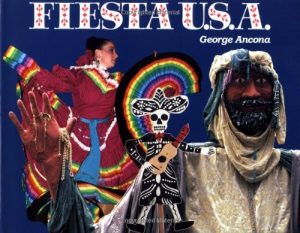 In a tribute to the customs and traditions of Latinos in the United States, engaging photographs capture four fiestas: the Day of the Dead, las Posadas, the dance of the Matachines, and Three Kings’ Day.
In a tribute to the customs and traditions of Latinos in the United States, engaging photographs capture four fiestas: the Day of the Dead, las Posadas, the dance of the Matachines, and Three Kings’ Day.
Author: Book Importer
The Piñata Maker / El Piñatero
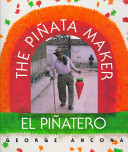
Told in both English and Spanish by award-winning author-photographer George Ancona, The Pinata Maker/El pinatero documents this traditional Latin American artform and includes a note on how to make pinatas at home. Set in Mexico.
Carnaval
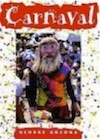
For weeks the people of the Brazilian town of Olinda have been sewing costumes, painting masks, and creating giant puppets–preparing for carnaval. Like Mardi Gras in New Orleans, carnaval is a five-day festival of parades, dancing, and singing. But unlike Mardi Gras, Olinda’s carnaval still celebrates the traditions and folklore of the people and the shared cultures–indigenous, European, and African–that make up Brazil. As generations have done each year, the people of Olinda and their visitors give themselves over to the music, dance, and joy of carnaval.
Charro (Spanish-Language)
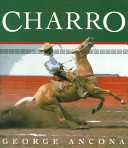
Charro is the Mexican term for horseman, but for a Mexican a charro is much more than a cowboy. A skilled rider of horses and bulls and bucking broncos, an artist with a lariat, and a model of gentlemanly dress and behavior, the charro is also a living symbol of Mexico’s patriotic past. In the rodeo-like sport called la charrería, male charros and female charras, children and adults, show off their skill and daring. But more than that they are showing off their pride in their country–because to be a charro is to be a Mexican.
Fiesta U.S.A./Spanish (Spanish Edition)
Pablo Remembers
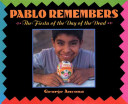
From October 31 to November 2, people in Mexico celebrate the festival of el Dia de Los Muertos, the Day of the Dead. This photodocumentary follows Pablo and his family as they prepare to honor the memory of Pablo’s grandmother. Ancona’s photographs catch the affirmation of life that fills the Mexican festival arising from both Aztec and Christian customs honoring the dead.
Earth Daughter: Alicia of Acoma Pueblo
Prietita and the Ghost Woman / Prietita Y La Llorona
In a bilingual retelling of a famous Mexican legend, Prietita sets out to find the missing herb that can cure her mother’s illness and, while lost in the woods, comes face to face with the mysterious la Llorona, the ghost woman.
A Movie in My Pillow/Una Pelicula en mi almohada: Poems/Poemas
A young boy with two homelands and a delightful sense of wonder comes to life in Jorge Argueta’s first collection of poems for children. Young Jorgito lives in San Francisco’s Mission District, but he hasn’t forgotten his native El Salvador. He recalls the volcanoes, the tasty cornmeal pupusas, and his grandmother’s stories. As he changes from timid newcomer to seasoned city dweller, Jorgito’s memories and new adventures form a patchwork of dreams — the movie in his pillow — that is perfectly suited to his new bicultural identity.
La Fiesta De Las Tortillas / The Fiesta Of The Tortillas (Spanish Edition)
 The author remembers the day in which the Spirit of the Corn visited the restaurant that his family owned in El Salvador. The narration is full of suspense and impregnated with the delicious scents that surrounded the kitchen and that remain intact in the memory and the heart of the author from his childhood.
The author remembers the day in which the Spirit of the Corn visited the restaurant that his family owned in El Salvador. The narration is full of suspense and impregnated with the delicious scents that surrounded the kitchen and that remain intact in the memory and the heart of the author from his childhood.

